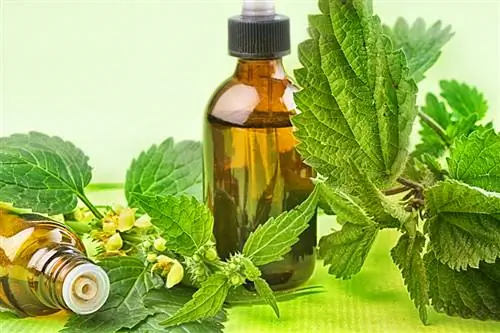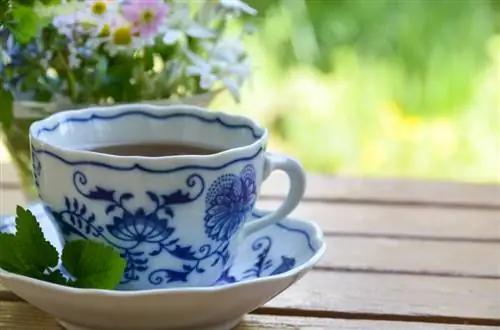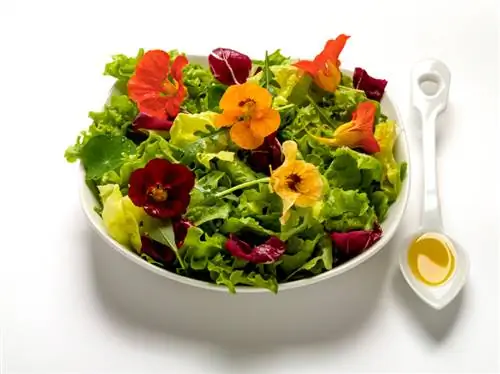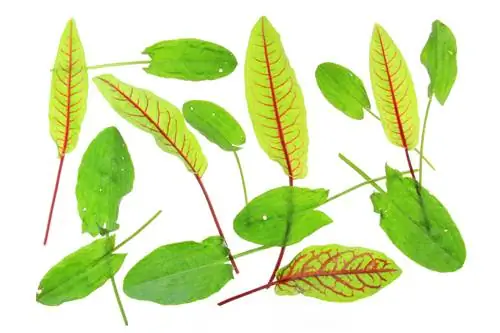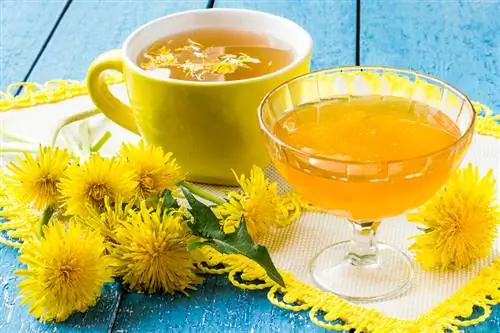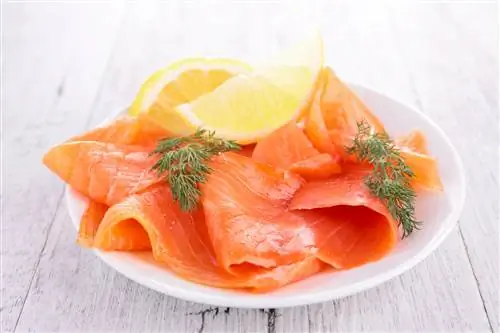- Author admin [email protected].
- Public 2023-12-16 16:46.
- Last modified 2025-06-01 06:02.
The golden nettle is very similar to the white dead nettle and can be used in the same way. The plant is very common both in the wild and in cultivation and prefers nutrient-rich, clay-rich soils.
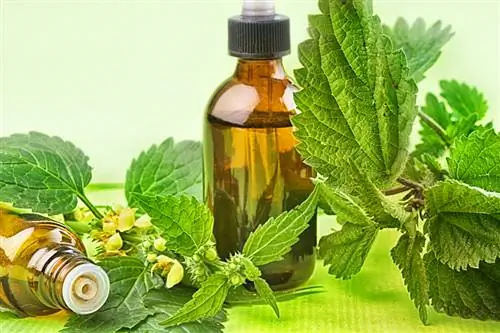
What uses does the golden nettle have?
The golden nettle can be used as an ornamental plant, in the kitchen or as a medicinal plant. It is suitable as a ground cover, its flowers and leaves can be used as decoration or in salads and it has anti-inflammatory properties in the form of tea.
The golden nettle as an ornamental plant
The golden nettle, which grows to a height of around 60 centimeters, forms a lot of runners and, thanks to this, spreads extremely quickly. For this reason, the perennial is particularly suitable as a ground cover under trees or along the edges, as long as it is not too dark. The golden nettle prefers semi-shady to shady locations. In addition, the silvery leaves of the golden nettle provide a splash of color even in winter, as the plant is evergreen.
Golden nettles in the kitchen
Furthermore, all parts of the golden nettle - from the flowers, which taste honey-sweet thanks to the abundant nectar, to the roots - are edible. The flowers are ideal for decorating desserts, for example, while the young leaves and shoots taste good raw in salads or steamed as wild spinach. The roots can be dug up in autumn and prepared as a vegetable, similar to salsify. In principle, the plant can be used all year round, although in winter only the roots and leaves, but not the shoots, should be harvested.
Golden nettles as a medicinal plant
But the golden nettle is not only known as a vegetable, but also as a medicinal plant, especially for colds. Both the flowers and the leaves contain anti-inflammatory and antibacterial substances that are traditionally given as a tea. For example, in spring you can collect the delicate leaves of the golden nettle and dry them carefully - be careful! Never dry herbs in the sun, otherwise valuable ingredients will be lost! - and finally mix with other leaves and flowers of wild herbs. This is how you win a tasty, self-made herbal tea.
Make your own herbal tea
Putting together herbs for your own herbal tea blend is actually a science in itself. If you are interested, try not to use more than seven different herbs per mixture, although three to four are usually sufficient. You can mix leaves and flowers colorfully. Daisies, chamomile and lime flowers, coltsfoot flowers, ribwort plantain leaves and raspberry leaves go particularly well with golden nettle.
Tip
When collecting wild herbs, you should never take plants from fields, paths or roadsides. These often contain many pollutants, such as car exhaust fumes or pesticides sprayed in agriculture.

